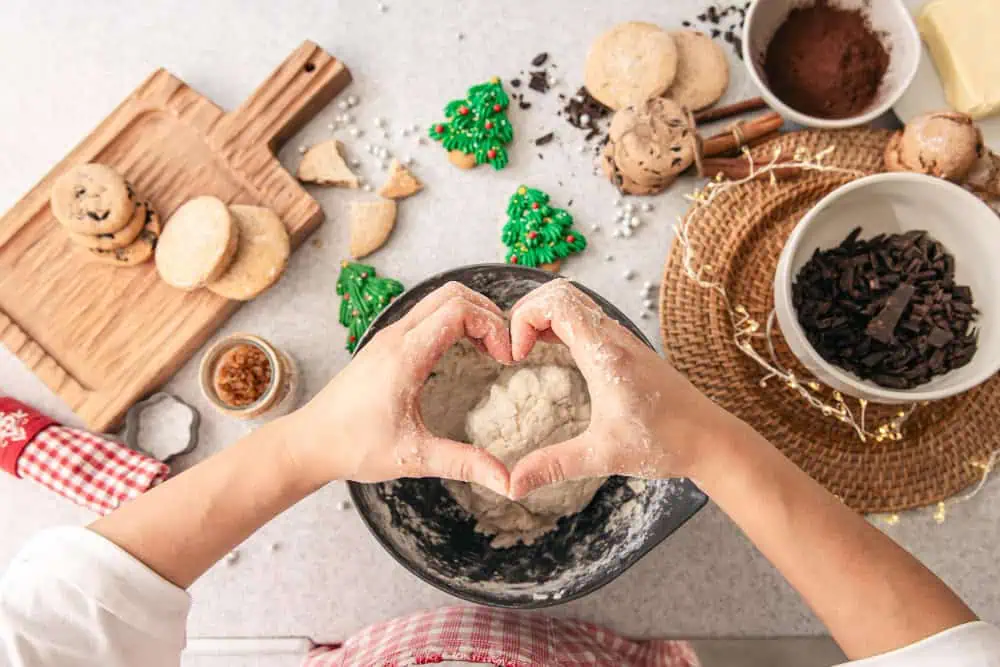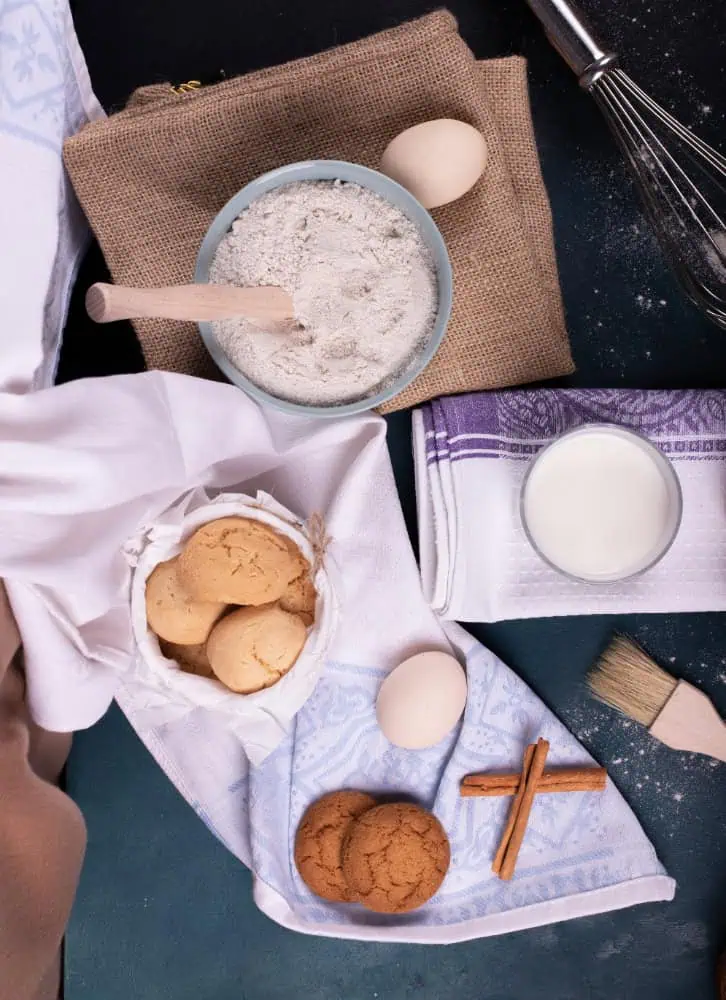When it comes to baking, few things are as delightful as a batch of soft cookies. Whether you prefer classic chocolate chip, oatmeal raisin, or sugar cookies, achieving that perfect soft texture can sometimes feel like a mystery. So, what is the secret to making cookies soft? In this detailed guide, we will explore the essential ingredients, techniques, and tips that will help you create cookies that are irresistibly soft and chewy every time.
Understanding the Basics of Cookie Texture
Before diving into the secrets of soft cookies, it’s important to understand what contributes to cookie texture. The texture of cookies is influenced by several factors, including:
- Ingredients: The type and quality of ingredients used can significantly affect the final texture.
- Mixing Method: How you combine your ingredients can lead to different textures.
- Baking Time and Temperature: These factors determine how cookies rise and set.
The Role of Ingredients in Cookie Softness
1. Flour
The type of flour you use plays a crucial role in the texture of your cookies. Here are the most common types:
- All-Purpose Flour: This is the most commonly used flour for cookies. It has a moderate protein content, which helps create a balanced texture.
- Cake Flour: With a lower protein content, cake flour can produce softer, more tender cookies. If you want to experiment, try substituting a portion of all-purpose flour with cake flour.
- Bread Flour: This flour has a higher protein content and is not recommended for soft cookies, as it can lead to a tougher texture.
2. Sugars
The type of sugar you use can also impact the softness of your cookies:
- Brown Sugar: This sugar contains molasses, which adds moisture and chewiness to cookies. Using a higher ratio of brown sugar to white sugar can result in softer cookies.
- Granulated Sugar: While it helps with spreading, using too much can lead to a crispier texture. A balance between the two is key.
3. Fats
The type of fat you use is another critical factor:
- Butter: Using unsalted butter at room temperature is ideal. It provides flavor and contributes to a soft texture.
- Shortening: This can be used in place of butter for a softer cookie, as it has a higher melting point and retains moisture better.
- Margarine: Similar to shortening, margarine can also help achieve a soft texture, but be sure to use a baking variety.
4. Eggs
Eggs add moisture and richness to cookies. For softer cookies, use large eggs at room temperature. The egg yolk contributes to a tender texture, while the egg white helps with structure.
5. Additional Moisture
Adding extra moisture can help keep cookies soft:
- Milk or Cream: A tablespoon or two can enhance the softness of your cookies.
- Cornstarch: Adding a small amount of cornstarch can help retain moisture and create a softer texture.
Techniques for Soft Cookies
1. Proper Mixing
The way you mix your ingredients can affect the texture of your cookies:
- Creaming Method: Start by creaming the butter and sugars together until light and fluffy. This process incorporates air, which helps create a tender texture.
- Avoid Overmixing: Once you add the flour, mix just until combined. Overmixing can develop gluten, leading to tougher cookies.
2. Chilling the Dough
Chilling your cookie dough is a crucial step that many bakers overlook:
- Why Chill?: Chilling the dough helps prevent spreading during baking, resulting in thicker, softer cookies. It also allows the flavors to meld together.
- How Long?: Aim to chill the dough for at least 30 minutes, but longer (up to 24 hours) can yield even better results.
3. Baking Temperature and Time
Getting the baking temperature and time right is essential for soft cookies:
- Oven Temperature: Preheat your oven to 350°F (175°C). Using an oven thermometer can help ensure accuracy.
- Baking Time: Remove cookies from the oven when they are just set around the edges but still soft in the center. This usually takes about 8-12 minutes, depending on the size of the cookies.
4. Using Parchment Paper
Baking cookies on parchment paper can help prevent them from spreading too much and can also make cleanup easier. It provides a non-stick surface that helps maintain the softness of the cookies.

Tips for Storing Soft Cookies
Once you’ve baked your delicious soft cookies, proper storage is key to maintaining their texture:
1. Airtight Containers
Store cookies in an airtight container at room temperature. This helps retain moisture and keeps them soft.
2. Adding Bread
Place a slice of bread in the container with your cookies. The bread will release moisture, keeping the cookies soft for longer.
3. Freezing Cookies
If you want to save some cookies for later, freezing is a great option:
- Freezing Dough: You can freeze cookie dough before baking. Scoop the dough onto a baking sheet, freeze until solid, then transfer to a freezer bag. Bake directly from the freezer, adding a minute or two to the baking time.
- Freezing Baked Cookies: Allow cookies to cool completely, then place them in an airtight container or freezer bag. They can be frozen for up to three months.
Common Mistakes to Avoid
Even experienced bakers can make mistakes that lead to less-than-perfect cookies. Here are some common pitfalls to avoid:
1. Overbaking
One of the most common mistakes is overbaking cookies. Remove them from the oven when they are slightly underdone in the center. They will continue to cook on the baking sheet as they cool.
2. Incorrect Measurements
Baking is a science, and accurate measurements are crucial. Use the spoon-and-level method for measuring flour and other dry ingredients to avoid packing them down.
3. Not Using Room Temperature Ingredients
Using cold ingredients can lead to uneven mixing and a denser texture. Always bring your butter, eggs, and other ingredients to room temperature before starting.
4. Ignoring the Recipe
While baking can be a creative process, it’s important to follow the recipe, especially when it comes to ratios and baking times. Deviating too much can lead to unexpected results.
The Science Behind Soft Cookies
Understanding the science behind baking can help you achieve better results. Here are some key concepts:
1. Gluten Development
Gluten is a protein that forms when flour is mixed with liquid. While some gluten development is necessary for structure, too much can lead to tough cookies. This is why it’s important to avoid overmixing.
2. Sugar and Moisture
Sugar not only sweetens cookies but also helps retain moisture. Brown sugar, in particular, is hygroscopic, meaning it attracts and holds onto moisture, contributing to a softer texture.
3. Fat and Texture
Fats, such as butter and shortening, play a crucial role in cookie texture. They coat the flour proteins, inhibiting gluten formation and resulting in a tender cookie.
4. Baking Soda vs. Baking Powder
Understanding the difference between baking soda and baking powder is essential. Baking soda is a base that requires an acid to activate, while baking powder contains both an acid and a base. Using the right leavening agent can affect the texture and spread of your cookies.

Flavor Enhancements for Soft Cookies
While achieving the perfect texture is important, enhancing the flavor of your cookies can take them to the next level. Here are some ideas:
1. Vanilla Extract
Adding pure vanilla extract can enhance the overall flavor of your cookies. Use high-quality vanilla for the best results.
2. Chocolate Chips
Using high-quality chocolate chips can make a significant difference in flavor. Consider using a mix of dark, milk, and white chocolate for a more complex taste.
3. Nuts and Dried Fruits
Incorporating nuts or dried fruits can add texture and flavor. Chopped walnuts, pecans, or dried cranberries can complement the sweetness of your cookies.
4. Spices
Adding spices like cinnamon, nutmeg, or even a pinch of sea salt can elevate the flavor profile of your cookies. Experiment with different combinations to find your favorite.
Creative Variations for Soft Cookies
Once you master the basic soft cookie recipe, consider trying out some creative variations:
1. Stuffed Cookies
Stuffed cookies are a fun twist on the classic. Consider filling your cookies with caramel, Nutella, or peanut butter for a delicious surprise.
2. Frosted Cookies
Frosting can add an extra layer of sweetness and flavor. Use buttercream, cream cheese frosting, or even a simple glaze to top your cookies.
3. Seasonal Flavors
Incorporate seasonal flavors like pumpkin spice in the fall or peppermint in the winter. These flavors can add a festive touch to your cookies.
4. Healthier Alternatives
If you’re looking for a healthier option, consider using whole wheat flour, oats, or natural sweeteners like honey or maple syrup. These alternatives can still yield soft cookies while providing added nutrition.
The Importance of Experimentation
Baking is as much about creativity as it is about precision. Don’t be afraid to experiment with different ingredients and techniques. Here are some ideas for experimentation:
- Adjusting Ratios: Try varying the ratios of sugars or fats to see how it affects the texture and flavor.
- Mix-Ins: Experiment with different mix-ins like coconut flakes, toffee bits, or even crushed candy bars.
- Baking Times: Keep a close eye on your cookies during baking. Every oven is different, and slight adjustments in time can lead to better results.
Frequently Asked Questions (FAQs)
What is the secret to making cookies soft?
The secret to making cookies soft lies in using the right ingredients, such as brown sugar and butter, and employing techniques like chilling the dough and avoiding overbaking.
Why do my cookies get hard after cooling?
Cookies can become hard after cooling due to overbaking or incorrect ingredient ratios. To prevent this, slightly underbake your cookies and store them properly.
How long should I cream butter and sugar?
Cream butter and sugar for about 3-5 minutes until the mixture is light and fluffy. This process incorporates air, which contributes to a softer texture.
Can I substitute ingredients and still get soft cookies?
Yes, but be mindful of ratios. Common substitutions include using margarine for butter or Greek yogurt for eggs. Adjust quantities as needed to maintain the right texture.
How do I know when cookies are done baking?
Look for these signs:
- Edges are lightly golden
- Centers appear slightly underbaked
- Bottom is light golden brown
What’s the best way to store soft cookies?
Store cookies in an airtight container with a slice of bread to maintain moisture. They can stay fresh for up to 5 days at room temperature.
Can I freeze cookie dough?
Yes! You can freeze cookie dough for future use. Scoop the dough onto a baking sheet, freeze until solid, then transfer to a freezer bag. Bake directly from the freezer, adding a minute or two to the baking time.
What can I do if my cookies are too dry?
If your cookies turn out dry, consider adding a bit more fat or moisture next time. You can also try reducing the baking time or using more brown sugar.
How can I make my cookies chewier?
To make your cookies chewier, increase the amount of brown sugar, add an extra egg yolk, or incorporate a bit of corn syrup into the dough.
What is the best way to prevent cookies from spreading?
To prevent cookies from spreading too much, chill the dough before baking, use a higher ratio of brown sugar, and ensure your baking sheets are not greased.
Conclusion
In conclusion, the secret to making soft cookies lies in understanding the ingredients, mastering the techniques, and avoiding common mistakes. By following the tips outlined in this guide, you can create delicious, soft cookies that will impress your family and friends. Remember, baking is both an art and a science, so don’t be afraid to experiment and find what works best for you. With practice and patience, you’ll be able to whip up batches of soft cookies that are not only delightful to eat but also a joy to share. Happy baking!

